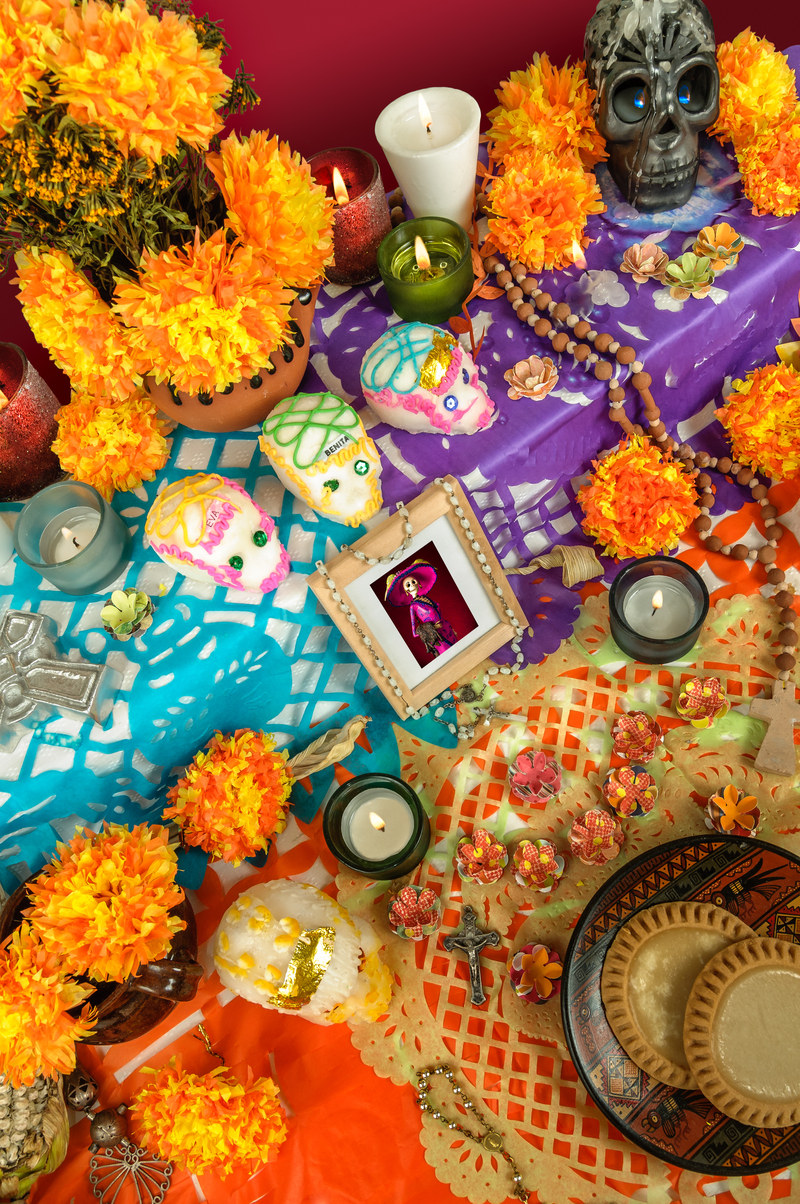Unlock the Mysteries: 7 Intriguing Tulip Facts Unveiled
Posted on 05/09/2025
Unlock the Mysteries: 7 Intriguing Tulip Facts Unveiled
Tulips have long enchanted the world with their breathtaking beauty, vibrant colors, and rich history. But beyond their decorative appeal, these spring-blooming flowers harbor a trove of fascinating secrets. In this comprehensive guide, we'll unveil seven captivating tulip facts that will not only deepen your appreciation for these blooms but also enhance your understanding of their enduring allure. Whether you're a gardening enthusiast, a history buff, or simply a lover of floral wonders, get ready to unlock the mysteries of the tulip flower!
1. Tulip Mania: The World's First Financial Bubble?
Did you know that the humble tulip once caused a financial frenzy so intense it's remembered as the first recorded economic bubble? This episode, dubbed "Tulip Mania", gripped the Netherlands in the early 17th century.
What sparked "Tulip Mania"?
- In the 1630s, rare tulip bulbs became a status symbol among the Dutch elite.
- Extraordinary prices were paid for unique varieties, especially those with striking patterns caused by a mosaic virus.
- Speculation soared, with traders buying and selling tulip futures contracts, often with no intention of taking possession of the actual bulbs.
At the height of the craze, some single tulip bulbs reportedly fetched sums equivalent to the cost of a luxurious home in Amsterdam!
When the bubble inevitably burst in 1637, thousands faced financial ruin. While some modern historians debate the true scale of the disaster, there's no doubt that Tulip Mania cemented the flower in economic history as a symbol of both beauty and speculative excess.

2. The Surprising Origins of Tulips: From Wild Mountains to European Gardens
The next time you admire a tulip, consider its incredible journey from the wilds of Central Asia to millions of gardens around the globe.
- The tulip's natural habitat lies in the mountains of Kazakhstan, Turkey, and the surrounding stretch of Central Asia.
- For centuries, wild tulip species bloomed on windswept hillsides, undisturbed by humans.
- Ottoman Turks were among the first to cultivate tulips extensively, regarding them as symbols of paradise on earth.
Tulips entered Europe through the diligent work of ambassadors and merchants. Ogier de Busbecq, a diplomat to the Ottoman court, famously sent tulip bulbs to Vienna in the mid-16th century. Soon after, the Dutch transformed the tulip into a cornerstone of their economy and horticultural tradition.
3. Tulip Symbolism: More Than Just a Pretty Face
Tulip symbolism runs deep in many cultures, far beyond surface-level beauty. These meanings have evolved over centuries and still captivate tulip enthusiasts today.
What do tulips symbolize?
- Perfect Love: In Persian and Turkish poetry, the tulip represents a declaration of romantic devotion.
- Rebirth and Renewal: As one of the earliest spring flowers, tulips are heralds of new beginnings.
- Pride and Charity: In Victorian floriography, tulips could express respect, support, and care for others.
Colors add layers of meaning: red tulips signify true love, yellow tulips can denote cheerful thoughts or, historically, unrequited love, and purple tulips are associated with royalty and admiration.
Did you know? In the Ottoman Empire, the tulip was so revered that the era between 1718 and 1730 is known as the "Tulip Era", a period marked by peace, prosperity, and cultural flowering--both literal and figurative!
4. An Incredible Diversity: Over 3,000 Registered Tulip Varieties
When you picture a tulip, what comes to mind? A classic red bulb, perhaps? In fact, the International Register of Tulip Varieties lists over 3,000 distinct cultivated tulip types--a testament to centuries of innovation by breeders and enthusiasts.
Discover the Major Tulip Groups:
- Single Early and Single Late Tulips: Classic, cup-shaped flowers in a range of hues.
- Double Tulips: Boasting lush, peony-like petals for extra fullness and drama.
- Lily-flowered Tulips: Noted for their pointed petals and elegant outlines.
- Fosteriana, Greigii, and Kaufmanniana Tulips: Valued for their unique foliage and early blooms.
- Parrot Tulips: Characterized by fringed, feathered, and bi-colored petals--truly spectacular!
Each variety offers its own blend of color, timing, and growth habits, making tulip gardening a delightfully creative endeavor. With such diversity, there's a tulip for every preference and palette.
5. Tulip Petals Are Edible--and Surprisingly Versatile
Here's a tulip fact that might surprise you: tulip petals are technically edible! During World War II, when food supplies in the Netherlands ran desperate, some people turned to boiling and eating tulip bulbs and petals to survive.
Are tulips safe to eat?
- While most tulip petals are edible, bulbs can be toxic unless properly prepared. Always consult a plant expert before consuming wild or ornamental plants.
- The taste of tulip petals ranges from subtle and starchy to slightly sweet or bitter, depending on the variety.
Today, chefs sometimes use tulip petals as an elegant garnish for salads and desserts--always from pesticide-free sources. Just one more example of the tulip's surprising versatility beyond the garden bed!
6. The Largest Tulip Festivals: Global Celebrations of Color
If you adore tulips, don't miss the world's spectacular tulip festivals! Every year, cities and countries celebrate this remarkable flower in displays that rival the most magical dreams.
International Tulip Festival Highlights:
- Keukenhof, The Netherlands: Known as the "Garden of Europe," Keukenhof boasts more than seven million tulips in bloom each spring.
- Canadian Tulip Festival, Ottawa: Originating from the Dutch royal family's World War II gratitude, this event lights up the Canadian capital each May.
- Skagit Valley Tulip Festival, Washington State (USA): A dazzling kaleidoscope across vast acres, drawing visitors from around the globe.
- Istanbul Tulip Festival, Turkey: Paying homage to the flower's Ottoman roots, this event transforms parks with endless ribbons of color.
These festivals are more than tourist attractions: they preserve tulip heritage, foster international friendship, and bring communities together to celebrate the magic of spring.

7. Cutting-Edge Science: Tulips in Genetic Research
Beyond beauty and commerce, the tulip flower has found a surprising place in the vanguard of modern science. Researchers study tulips to understand genetics, plant diseases, and even climate change.
Fascinating scientific discoveries:
- Viral "Flaming" Effects: The striking stripes and feathered patterns--once so prized during Tulip Mania--are caused by the Tulip breaking virus.
- Genomic mapping of tulips helps scientists improve disease resistance and extend bloom times.
- Tulip phenology (timing of natural events) helps track environmental changes, as tulips are especially sensitive to variations in temperature and daylight.
The next time you see a tulip, you're not just looking at a beautiful flower, but a living laboratory--one that has helped advance human knowledge for centuries.
Unlock the Tulip Mysteries: Final Thoughts
From the dizzying heights of Tulip Mania to the hands of modern scientists, the story of the tulip is truly one of wonder, resilience, and perpetual innovation. Each of the seven tulip facts unveiled here reveals a different facet of this extraordinary flower's enduring mystery.
- Tulips have shaped economies, inspired art and poetry, and changed the face of world gardens.
- They unite communities, spark scientific inquiry, and surprise us with their edible uses and vast diversity.
Whether you are planting your first bulbs or simply admiring their vibrant blooms, remember that the tulip is more than just a harbinger of spring--it's a multifaceted symbol whose mysteries are still unfolding.
Frequently Asked Questions About Tulips
- Which month do tulips bloom?
Tulips typically bloom from March through May, depending on the region and variety. - How long do tulip flowers last?
Each tulip flower lasts one to two weeks, though careful gardening can extend the show. - Are tulips perennials?
Many tulips are technically perennials, but for best results, gardeners often replant bulbs yearly or every few years. - Can you grow tulips in pots?
Yes! Choose smaller varieties for stunning container displays.
If you've enjoyed these intriguing tulip facts, consider sharing this article or exploring more about tulip cultivation and tulip symbolism in your own garden or community. The journey of discovery has just begun!







